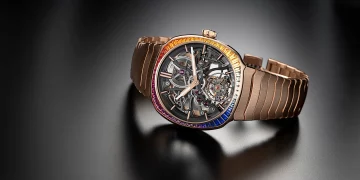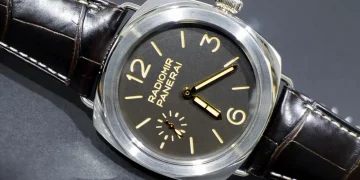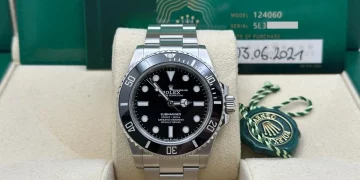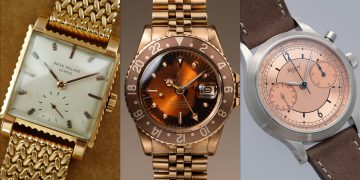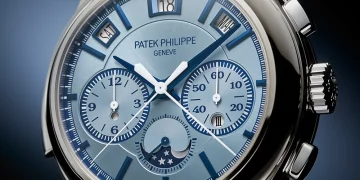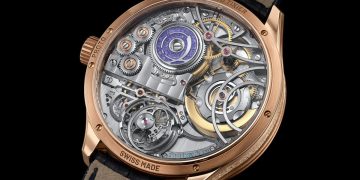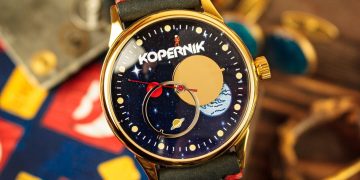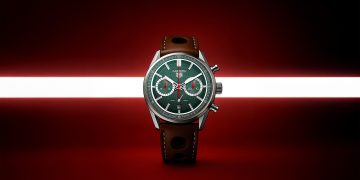Introduction
The world of luxury watches is not just about timekeeping; it’s a narrative of tradition, heritage, craftsmanship, and innovation. One of the most significant aspects of this narrative is how the history of a brand influences its contemporary designs. Watchmakers around the world are deeply rooted in their pasts, and understanding this rich heritage is key to appreciating the evolution of their modern creations. Every watch brand carries with it a legacy of design, craftsmanship, and technological breakthroughs that continue to influence its current and future collections.
In this article, we will explore how a watch brand’s historical milestones, core values, and cultural influences shape its contemporary designs. By looking at a selection of iconic brands, we will uncover how the lessons of the past are applied in the creation of today’s finest timepieces.
1. The Role of Heritage in Watch Design
1.1 The Roots of Swiss Watchmaking
Switzerland has long been considered the heart of luxury watchmaking. The history of Swiss watchmaking is deeply entwined with the notion of precision, craftsmanship, and innovation. The rise of iconic Swiss watch brands such as Rolex, Patek Philippe, Omega, and Audemars Piguet was heavily influenced by the need to establish superiority in accuracy, reliability, and design.
- Innovation and Craftsmanship: Brands like Rolex have their roots in innovation. For instance, the creation of the Rolex Oyster, the first waterproof wristwatch, was a breakthrough in both functionality and design. The influence of this innovation can still be seen in their designs today, where functionality and form meet seamlessly.
1.2 The Impact of Early Designs on Contemporary Creations
Early designs often serve as a reference for modern pieces. For example, Patek Philippe, known for its exceptional complications and craftsmanship, has maintained a design ethos rooted in classical aesthetics. The brand’s iconic Calatrava model, introduced in 1932, remains a timeless example of minimalist elegance and has influenced many of their current dress watch designs.
2. The Connection Between Brand Heritage and Modern Technology
While design influences from history continue to play a major role, modern technology also brings new layers to how brands approach their watch creations.
2.1 The Balance Between Tradition and Innovation
Luxury watchmakers today strive to find a balance between their historical roots and the modern technologies that have reshaped the industry. Omega, for example, has stayed true to its legacy of precision with models like the Speedmaster, which was worn by astronauts during the Apollo missions. Today, Omega continues to innovate with the integration of high-tech materials such as ceramic and silicon, which improve performance and durability, all while retaining the design elements that made the brand famous.
- Technological Advancement: Audemars Piguet is another brand that has embraced technological advancements. Their introduction of the Royal Oak in 1972 revolutionized watch design with its octagonal bezel and integrated bracelet. Over the years, the brand has embraced modern materials like titanium and forged carbon to create ultra-light yet durable timepieces, while maintaining the distinctive design lines that have become a hallmark of the Royal Oak collection.
2.2 The Influence of Modern Watch Movements
The transition from hand-wound mechanical movements to automatic and quartz movements reshaped watchmaking in the 20th century. However, many luxury brands have held onto their traditional mechanical movements to retain a link to their past. This respect for craftsmanship and legacy continues to influence contemporary design.
For instance, Patek Philippe’s Grand Complications and Vacheron Constantin’s exceptional craftsmanship in high complications like perpetual calendars and minute repeaters show how the complexity of the movements remains at the forefront of modern design while respecting the brand’s historical commitment to intricate watchmaking.
3. Cultural and Historical Influences on Design Aesthetics
3.1 The Swiss Influence on Global Watch Design
Swiss watchmaking, particularly in the 20th century, set the global standard for watch design, especially with iconic designs such as the Rolex Submariner, Omega Seamaster, and Cartier Tank. These designs remain enduring symbols of luxury and functionality, and their aesthetic lines have been carried forward in their modern models.
- Timelessness: The classic round case, clean dial, and simple yet elegant hands found in many Swiss watch designs are echoes of their predecessors. Even today, brands like Longines and Breguet incorporate these timeless elements in their collections, ensuring that the essence of Swiss watchmaking remains intact.
3.2 The Influence of Art and Culture
Many luxury watchmakers are influenced by artistic movements and historical periods that have shaped their respective countries. For example, Jaeger-LeCoultre has often drawn from its rich history in Art Deco design, incorporating geometric shapes and symmetrical forms in its timepieces.
- Cultural Symbols in Watch Design: Cartier, which was known for its avant-garde designs in the early 20th century, drew inspiration from Art Deco architecture. The Cartier Tank, which was inspired by the shape of a military tank, has maintained its elegance and architectural integrity in modern designs.
3.3 The Role of the Brand’s Founders in Shaping Design Philosophy
The founders of luxury watch brands often instilled a particular design philosophy that continues to influence their creations. The influence of Hans Wilsdorf, the founder of Rolex, can be seen in the company’s relentless pursuit of excellence and precision, which is evident in the brand’s design ethos of durability and functionality combined with aesthetic elegance.
- Brand Identity and Design Continuity: Vacheron Constantin was founded in 1755, and since then, the brand has focused on maintaining its heritage of creating some of the world’s finest timepieces. The brand’s commitment to maintaining a high level of craftsmanship is reflected in its contemporary designs, which maintain the same level of meticulous attention to detail.

4. Iconic Watches and Their Legacy
4.1 The Rolex Submariner and Its Evolution
One of the most iconic models in the history of luxury watches is the Rolex Submariner. Initially designed in 1953 as a professional diving tool, the Submariner’s robust design and water resistance have made it a favorite among divers and collectors alike. Over the years, the Rolex Submariner has seen numerous updates, but the essential elements of the design—such as the rotating bezel and distinctive markers—remain unchanged.
- Continuity in Design: The Submariner has evolved with modern materials like Cerachrom ceramic for the bezel and Oystersteel for the case, but its fundamental design remains deeply rooted in the history of the brand. This blend of tradition and modernity ensures that the Submariner appeals to both contemporary tastes and collectors who appreciate the legacy of the watch.
4.2 The Patek Philippe Calatrava and Its Influence on Dress Watches
Another exemplary model is the Patek Philippe Calatrava. Introduced in 1932, it remains one of the finest examples of minimalist elegance. The Calatrava’s timeless design has influenced countless other luxury dress watches over the years. Its simple, clean lines and classic proportions continue to influence Patek Philippe’s current collections, ensuring that the brand remains synonymous with luxury and refinement.
- Enduring Legacy: The Calatrava has been the standard by which many other luxury brands measure their dress watches, and the design principles of symmetry and elegance continue to be central to the brand’s identity.
5. The Impact of Collectors and Watch Enthusiasts
Watch collectors and enthusiasts play a significant role in shaping contemporary designs. Their preferences often drive the creation of limited editions, special collaborations, and innovations that align with historical brand identities.
5.1 The Role of Limited Editions and Heritage Collections
Brands like Omega and Jaeger-LeCoultre often release limited-edition models that pay tribute to their historical milestones or famous models from the past. These limited editions, such as the Omega Speedmaster Professional or Jaeger-LeCoultre Reverso, often feature design elements that hark back to their origins.
- Heritage Celebrations: For example, the release of the Omega Speedmaster 321 in recent years was a direct nod to the original Speedmaster model worn by astronauts in the 1960s. These limited editions honor the brand’s historical milestones while incorporating modern improvements in technology and materials.
6. Conclusion
The history of a watch brand is deeply intertwined with its contemporary designs. Luxury watch brands draw inspiration from their past achievements, milestones, and core values, which help to shape the design philosophy of their modern collections. While contemporary technology has enabled the use of innovative materials and more efficient movements, the timeless elements of design rooted in the brand’s history continue to shine through.
Understanding the historical context of a brand allows collectors, enthusiasts, and consumers to appreciate not just the aesthetic beauty of a timepiece, but also the craftsmanship, heritage, and values that underpin it. The legacy of iconic brands such as Rolex, Patek Philippe, Omega, and Jaeger-LeCoultre continues to influence their designs today, ensuring that the world of horology remains as rich and relevant as ever.






